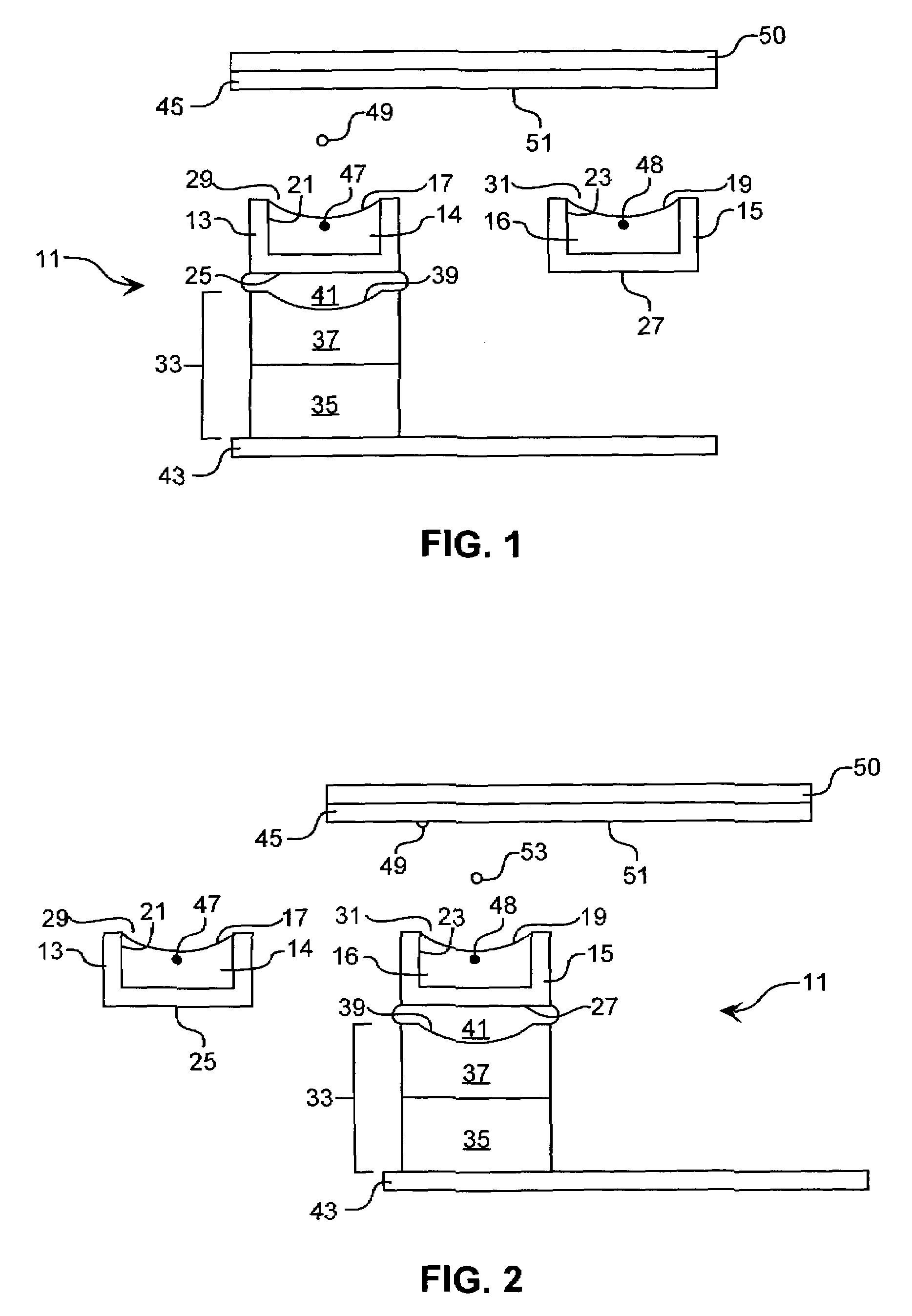Focused acoustic energy in the preparation of peptide arrays
a peptide array and focused acoustic energy technology, applied in the field of arrays of peptidic molecules and methods for preparing peptide arrays, can solve the problems of unfulfilled realization of peptide arrays, problems encountered, and disadvantages of ordinary inkjet technology, so as to achieve not result in or minimize the exposure of peptidic molecules
- Summary
- Abstract
- Description
- Claims
- Application Information
AI Technical Summary
Benefits of technology
Problems solved by technology
Method used
Image
Examples
example 1
[0096]This example demonstrates that deposition of a peptidic molecule on a substrate using focused acoustic energy does not affect the structure or activity of the molecule.
[0097]The peptidic molecule employed was TAQ polymerase, a thermostable DNA polymerase. TAQ Polymerase Master Mix from Qiagen was used as the source for TAQ polymerase.
[0098]The polymerase was ejected using a focused acoustic energy system from a well plate onto a polypropylene receiving tube using an F=2 lens. The enzymatic activity of the deposited polymerase was then evaluated using a polymerase chain reaction (PCR) assay. For this experiment, TAQ was used to amplify a randomly chosen sequence of the Puc18 vector (Amersham). The following primers were used:
[0099]Forward 5′ AACGTTGTAAAACGACGGCCAGT (SEQ ID NO.: 1); and
[0100]Reverse 5′ ACGATAGTTACCGGATAAGGCGC (SEQ ID NO.: 2) at final concentrations of 1.0 μM each.
[0101]The composition of the reaction mixture was 1 μg Puc18 DNA, 25 μL master mix, 22 μL H2O and 1 ...
example 2
[0104]This example describes preparation of a peptide array in the form of a combinatorial library, and demonstrates the use of focused acoustic energy in the combinatorial solid phase synthesis of all tetramers that can be made from the 20 naturally occurring amino acids (204 or=160,000 amino acid sequences in all) in a quadruplicate array format. Four identical copies of the combinatorial array to be prepared are contained in a 1 cm×1 cm area nominally divided into four quadrants, each quadrant containing 250,000 synthesized sites of size 10 μm×10 μm arrayed in 500 rows and 500 columns. Only 400 rows and columns are used in each quadrant; the first and last 50 rows and columns are not used for synthesis, and function to space the four identical arrays from each other and the edges of the area, although alternative arrangement of the four identical arrays can obtain greater distance between arrays by moving each array closer to the corners of the square area. In addition to systema...
example 3
[0113]This example demonstrates the use of focused acoustic ejection technology in generating peptidic arrays. Acoustic ejection of antibiotin polyclonal antibody (obtained from Sigma, St Louis, Mo.), green fluorescent protein (GFP) (obtained from Roche Biochemicals, Palo ALto, Calif.), anti-GFP monoclonal antibody (obtained from Roche Biochemicals, Palo Alto, Calif.), and lysozyme (obtained from Sigma, St Louis, Mo.), was carried out using an F=3 lens with a 6 mm aperture and a nominal 18 mm focal length in the reservoir fluid (40% glycerol, 60% phosphate buffered saline [PBS], pH=7.5).
[0114]Peptidic solutions were prepared in the aforementioned reservoir fluid with the peptidic molecules-antibiotin, GFP, anti-GFP and lysozyme—at a concentration of 100 μg / mL for anti-GFP, GFP and lysozyme (as a negative control). The solutions were printed onto aldehyde-coated slides obtained from NOAB Diagnostics (Mississauga, Ontario, Canada) and epoxy-coated slides obtained from Eppendorf AG (Ha...
PUM
| Property | Measurement | Unit |
|---|---|---|
| Length | aaaaa | aaaaa |
| Time | aaaaa | aaaaa |
| Time | aaaaa | aaaaa |
Abstract
Description
Claims
Application Information
 Login to View More
Login to View More - R&D
- Intellectual Property
- Life Sciences
- Materials
- Tech Scout
- Unparalleled Data Quality
- Higher Quality Content
- 60% Fewer Hallucinations
Browse by: Latest US Patents, China's latest patents, Technical Efficacy Thesaurus, Application Domain, Technology Topic, Popular Technical Reports.
© 2025 PatSnap. All rights reserved.Legal|Privacy policy|Modern Slavery Act Transparency Statement|Sitemap|About US| Contact US: help@patsnap.com



